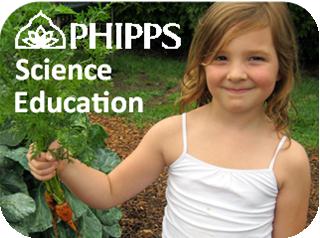Even though Phipps is located in the heart of the city of Pittsburgh, our visitors and staff are always reporting interesting animal sightings – from deer standing on the hill to hawks swooping down into the fields around the Conservatory. Urban areas may not seem at first glance to be a hospitable home to wildlife, but in reality there are many animals that have adapted well to the built environment. More than just a haven for squirrels and pigeons, the city is home to a variety of beautiful birds, deer, foxes and many other animals that are more commonly associated with woodland areas. People who live in these areas may not know that they share their space with such a wealth of critters, which is where citizen science comes in. Celebrate Urban Birds (CUB) is a project developed by the Cornell Lab of Ornithology whose primary purpose is to reach urban audiences who do not already participate in science, as well as to collect data about birds living in these environments. Birds are a perfect animal to study; they are attractive, plentiful, and easily spotted in any place.
Fall is a great time to think about birds, specifically helping them find food and shelter during the winter, as well as to provide safe and nourishing stops for them during migration. The more you are conscious of the bird populations that live near you, the better able you are to protect them from threats and encourage their habitation of your backyard or neighborhood. Additionally, participating in citizen science programs gives bird researchers useful information that they can’t collect on their own.
Why track bird populations? Bird populations are dynamic and constantly in a state of flux. Birds are always moving from place to place in search of food and shelter, especially during the colder months. Scientists need citizen help because no single team of scientists could ever completely document the complex distribution and movement of so many birds. The longer and more frequently bird populations are documented, the more useful the data becomes, especially as scientists begin to assess trends over time. Having so much data also helps scientists to ask more difficult questions, such as why bird diseases affect different regions or why the phenology of migration patterns changes from year to year.
Celebrate Urban Birds is a great way to participate in citizen science; the project focuses on just a few focal species, many of which are commonly sighted birds, and can involve as much or as little commitment as you desire. All you need to do to get started is to sign up and purchase your CUB kit from Cornell, then you are all set to start observing the birds around you. Here’s how you record your data:
- Beforehand, pick a date, time, and place for watching birds.
- Watch an area about the size of half a basketball court for ten minutes.
- Record which of the focal birds you see and don’t see in your birdwatching area.
- Send your data to CUB either online or on your paper form
Easy peasy, and you have just helped both birds and the scientists who study them! In addition to just watching birds and collecting data, CUB also supports related community programming in the arts, neighborhood greening and habitat restoration. They offer mini-grants to support community festivals and really want to help people connect the importance of birds and nature to all aspects of their lives.
This project is great for scout and youth groups, homeschoolers, school classes, or any other group, as well as for families. To get started, check out the Celebrate Urban Birds website – there are resources to help you learn good observation skills, identify focal species and more! Even if you are new to birding, CUB is an easy way to dip your toe into the water of citizen science. Check it out today!
To learn how to participate in bird-related citizen science, visit the Cornell Lab website. Learn more about the Celebrate Urban Birds program here!
New to bird watching, check out Cornell’s excellent resources for identifying difficult birds, using binoculars, and more!
Learn more about citizen science projects to do with your family on the blog!
The above photo is copyrighted to Maria Corcacas and used courtesy of Cornell Lab of Ornithology.











